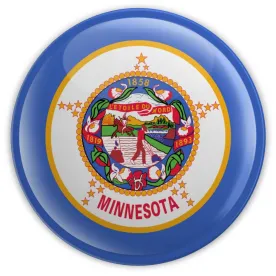On June 7, 2022, the Minnesota Department of Labor and Industry (MNDOLI) issued its long-awaited approved employer notice regarding requirements under the Frontline Worker Pay Law.
As discussed in our previous articles describing the requirements of the Frontline Worker Pay Law (found here and here), employers must provide notice to their employees, apprising them of their ability to apply for Frontline Worker Pay, within fifteen days of the application period opening (which is tentatively June 8, 2022). With respect to the notice, the law provides as follows:
(a) An employer must provide notice using the same means the employer uses to provide other work-related notices to employees.
(b) Notice provided under paragraph (a) must be at least as conspicuous as:
(1) posting a copy of the notice at each work site where workers work and where the notice may be readily observed and reviewed by all workers working at the site; or
(2) providing a paper or electronic copy of the notice to all workers.
The law specifically states that the notice must be approved by the MNDOLI commissioner, but MNDOLI had not previously provided any approved notice. This had left many employers with questions regarding how to comply with this requirement. Thankfully, this update marks the first time MNDOLI has issued the approved notice.
Notably, MNDOLI also addressed in a fact sheet another point of confusion for many employers—the meaning and scope of the term “frontline sectors”—and MNDOLI has provided clarification. For example, MNDOLI has outlined various types of businesses for each of the fifteen enumerated categories of “frontline sectors” and provided the following list to “give a general idea of the type of employment covered under the frontline sectors”:
(1) Long-term care and home care. Examples of employers in this sector include: nursing homes; group homes; hospices; home health care; residential drug and alcohol facilities; and assisted living facilities.
(2) Health care. Examples of employers in this sector include offices of physicians, chiropractors, optometrists, mental health specialists, and dentists. It also includes hospitals and medical clinics; family planning centers; substance abuse centers; dialysis centers; medical laboratories; blood and organ banks; freestanding ambulatory surgical and emergency centers; diagnostic imaging centers; and private air or ground ambulance services.
(3) Emergency responders. Examples of employers in this sector include: police and fire departments; state police; sheriff’s offices; and public ambulance and fire services.
(4) Public health, social service, and regulatory service. Examples of employers in this sector include: social services organizations; air and water resource and solid waste management programs; and government regulatory entities.
(5) Courts and corrections. Examples of employers in this sector include: the state court system; publicly administered jails, prisons, and detention centers; district attorneys’ offices; public defenders’ offices; and publicly administered parole offices and probation offices.
(6) Child care. Examples of employers in this sector include: child day care services; nursery schools; preschool centers; before- and after-school care; and Head Start programs.
(7) Schools, including charter schools, state schools, and higher education. Examples of employers in this sector include: K-12 education schools; colleges, universities, and junior colleges; professional schools; and business, technical, and trade schools.
(8) Foodservice, including production, processing, preparation, sale, and delivery. Examples of employers in this sector include: crop and livestock production and processing; aquaculture; food and beverage manufacturing; wholesalers; food and beverage stores; restaurants and cafeterias; grocery stores; food service; mobile food services; and caterers.
(9) Retail, including sales, fulfillment, distribution, and delivery. Examples of employers in this sector include: retail stores and other direct selling establishments; electronic shopping; motor vehicle and parts dealers; gas stations; postal services; private mail centers, couriers, and express delivery services; local messenger and delivery services; and general and refrigerated warehousing and storage facilities.
(10) Temporary shelters and hotels. Examples of employers in this sector include: hotels; motels; bed-and-breakfasts; emergency and other relief services; community food services, food banks or pantries; soup kitchens; and temporary shelters.
(11) Building services, including maintenance and janitorial. Examples of employers in this sector include: janitorial services; facility maintenance services; and security services.
(12) Public transit. Examples of employers in this sector include: transit and ground passenger transportation, such as commuter rail systems, light rail systems, bus, and other motor vehicle transit systems; bus terminal and service facilities; senior citizen and special needs transportation; and school bus transportation.
(13) Ground and air transportation services. Examples of employers in this sector include: airport operations; air traffic control; motor vehicle towing; freight transportation; loading or unloading at truck terminals; and transportation and warehousing.
(14) Manufacturing. Examples of employers in this sector include: manufacturing facilities for products including, but not limited to, leather, apparel, wood, paper, petroleum, chemicals, plastics, rubber, metal, fabricated metal, computer and electronic products, medical equipment, and supplies, and furniture.
(15) Vocational rehabilitation. This sector includes vocational rehabilitation[] services.
Notwithstanding the above, the law does not impose any requirement on employers (besides the notice requirement discussed above) to identify their sectors for employees. Rather, the onus is on the employee to identify the sector and apply for benefits.





 />i
/>i

